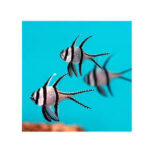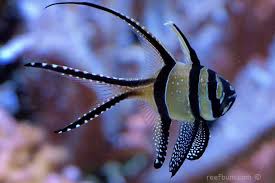The dragon (龙, lóng) has been an integral part of Chinese culture for thousands of years, symbolizing imperial power, divine protection, and cosmic harmony. Nowhere is its presence more profoundly felt than in the majestic palaces and sacred temples of China, where dragon motifs adorn architecture, furniture, and sacred artifacts.
This article delves into the significance of the dragon in palace and temple decorations, exploring its symbolic meanings, artistic expressions, and historical importance.
I. The Dragon as a Supreme Symbol in Chinese Architecture
1. The Dragon’s Role in Imperial and Religious Settings
In China, the dragon has long been associated with the emperor and the divine:
- The emperor was considered the “Son of the Dragon”, making dragon imagery a symbol of supreme power in palatial decorations.
- In temples, dragons represented spiritual protection, serving as guardians against evil forces and bringing harmony to the sacred space.
- The dragon’s ability to control water and weather made it an essential figure in temple prayers for rain and agricultural prosperity.
Due to its sacred and imperial status, the use of dragon imagery in architecture was strictly regulated in ancient times.
2. Different Types of Dragon Representations in Decorative Art
Chinese palace and temple decorations feature dragons in a variety of artistic forms, each with its own unique symbolism:
- Imperial Five-Clawed Dragon (五爪龙, wǔzhǎo lóng): Reserved for the emperor, this dragon was often seen on roof tiles, palace walls, and thrones.
- Four-Clawed and Three-Clawed Dragons: Used in temples and noble residences, these dragons symbolized lesser nobility or spiritual power.
- Coiling Dragon (蟠龙, pán lóng): Represented strength and eternity, often appearing on pillars and ceiling beams.
- Flying Dragon (飞龙, fēi lóng): Symbolized transformation and celestial power, frequently used in temple murals and altars.
Each variation reflects the dragon’s multifaceted role in both earthly and divine realms.
II. The Dragon in Palace Architecture and Decorations
1. The Forbidden City: A Masterpiece of Dragon Art
The Forbidden City (紫禁城, Zǐjìnchéng) in Beijing is one of the most stunning examples of imperial dragon motifs:
- Roof Decorations: Yellow glazed tiles with dragon carvings symbolized the emperor’s divine mandate.
- Hall of Supreme Harmony (太和殿, Tài Hé Diàn): The most important hall in the Forbidden City, featuring thousands of dragon images on columns, doors, and ceilings.
- Golden Dragon Throne (龙椅, Lóng Yǐ): The emperor’s throne was adorned with intricate dragon carvings, reinforcing his status as the ruler chosen by Heaven.
- Nine-Dragon Wall (九龙壁, Jiǔlóngbì): A famous glazed tile wall depicting nine powerful dragons, symbolizing imperial authority and balance in the universe.
With over 12,000 dragon motifs throughout the Forbidden City, this palace stands as a testament to the dragon’s supreme significance.
2. Summer Palace and the Gardens of the Dragon
The Summer Palace (颐和园, Yíhéyuán) in Beijing, a retreat for emperors, is another site rich in dragon-inspired designs:
- Dragon Boat (龙舟, Lóng Zhōu): Used by the royal family for leisure, these elaborately carved boats embodied imperial power over land and water.
- Dragon Bridges and Pavilions: Bridges shaped like dragons symbolized prosperity and strength, while dragon carvings on pavilions were meant to ward off evil spirits.
- Marble Boat (石舫, Shífǎng): Although not shaped like a dragon, this structure was associated with dragon energy, representing stability and endurance in imperial rule.
The integration of dragon motifs in palace gardens and leisure spaces reflected the belief that dragons could harmonize natural and man-made elements.
III. The Role of Dragons in Temple Art and Architecture
1. The Temple of Heaven: Where Dragons Meet the Divine
The Temple of Heaven (天坛, Tiāntán) in Beijing is one of the most sacred sites in China, where emperors performed rituals to pray for good harvests. The temple’s design is heavily influenced by dragon symbolism:
- Dragon and Phoenix Murals: Depict the emperor’s connection to the divine, with the dragon symbolizing Heaven’s power and the phoenix representing earthly blessings.
- Dragon-Carved Columns: Inside the Hall of Prayer for Good Harvests, massive pillars feature dragons that appear to ascend towards the sky, reinforcing the idea of spiritual elevation.
- Circular Dragon Layout: The temple’s circular structure reflects the Chinese cosmological belief in a round heaven, with dragons as celestial messengers.
Every aspect of the Temple of Heaven’s architecture aligns with ancient spiritual beliefs about the dragon’s role as a bridge between Heaven and Earth.
2. Daoist and Buddhist Temples: The Dragon as a Guardian
Dragon imagery is also prevalent in Daoist and Buddhist temples, where it serves both protective and decorative functions.
- Temple Roof Ornaments: Dragons appear as ridge decorations on temple roofs, believed to ward off disasters and invite divine blessings.
- Incense Burners and Altars: Large dragon-shaped incense burners are used in rituals to carry prayers to the heavens.
- Dragon Gates (龙门, Lóng Mén): Some temples feature carved stone dragon gates, symbolizing spiritual transformation for those who pass through.
Both Daoist and Buddhist traditions regard the dragon as a force that guides worshippers toward enlightenment and spiritual growth.
IV. The Dragon in Decorative Elements of Palaces and Temples
1. Dragon Motifs in Woodwork and Furniture
Palaces and temples feature exquisitely carved wooden dragons on furniture and interior designs:
- Dragon-Engraved Thrones and Screens: Found in imperial halls and Buddhist temples, symbolizing protection and cosmic order.
- Dragon Pillars and Beams: Supporting structures with dragon carvings represent stability and divine presence.
- Temple Bells and Drums: Often decorated with dragons, as their sound is believed to dispel evil and purify the environment.
The use of dragons in woodwork and temple artifacts adds another layer of spiritual and artistic depth.
2. Dragon-Inspired Ceramics and Porcelain
- Imperial Dragon Porcelain: Ming and Qing Dynasty emperors commissioned dragon-adorned ceramics, often reserved for royal use.
- Temple Offering Vessels: Many sacred offerings were placed in dragon-embellished vases, symbolizing prosperity and divine favor.
- Celestial Blue and Gold Dragons: Used in decorative tiles, representing the harmony of Heaven and Earth.
These artifacts showcase the dragon’s enduring role in sacred and imperial aesthetics.
V. The Dragon’s Legacy in Modern Chinese Architecture
Even in contemporary China, dragon motifs remain essential in cultural and religious buildings:
- Modern pagodas and temples continue to feature dragon sculptures to maintain traditional spiritual symbolism.
- Government buildings and cultural centers incorporate dragon-inspired designs as a tribute to China’s historical and artistic heritage.
- Dragon bridges, parks, and city sculptures reflect the continued reverence for the dragon as a protector of prosperity and harmony.
The presence of dragons in modern architecture ensures that their cultural significance endures.
Conclusion: The Dragon as an Eternal Guardian of Chinese Heritage
The dragon is more than just a mythical creature—it is a fundamental symbol that shapes the artistic, spiritual, and architectural identity of China. Whether in the imperial grandeur of palaces or the sacred serenity of temples, dragons continue to represent power, protection, and divine connection.
Even today, the presence of dragon imagery in China’s historical sites and modern structures reminds us of its timeless role as the guardian of Chinese civilization.










